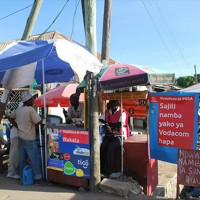Across the developing world, the revolution in mobile telecommunications technology is driving massive changes in access to financial services. Currently, there are 2.7 billion “unbanked” people in developing countries (.pdf). They have few effective ways to save money; accessing credit and transferring money is difficult and expensive; insurance is a dream. Yet, to break cycles of poverty, the poor need access to affordable and versatile financial services.
The rapid uptake of mobile phones, even in remote areas and among the poorest of the poor, has the potential to significantly increase financial inclusion. The Grameen Foundation estimates that nearly 40 percent of the unbanked now have access to a cell phone (.pdf). Mobile money -- the ability to conduct financial transactions like money transfers, savings and payment through cellular services like SMS -- is also expanding rapidly. More than 100 mobile-money systems have been deployed in emerging economies, with 84 of them implemented just in the past three years. Today, fully one-quarter of Kenya’s GDP flows through M-PESA, a mobile-money system launched in 2007 that has achieved the greatest penetration.
Technology is also facilitating other innovations in finance, providing new distribution channels such as peer-to-peer (P2P) finance, which facilitates direct cash transfers and Internet-based crowdsourcing of loans. These platforms are increasing transparency, reducing transaction costs and limiting corruption. In addition, Internet and mobile platforms allow for real-time, inexpensive data collection that can help improve development outcomes.

